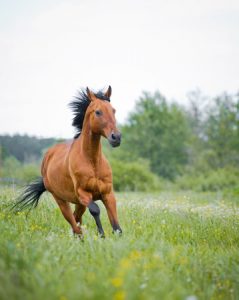 As spring settles in it’s time to start preparing your horse and barn for the seasonal shift. Transitioning properly helps ensure your horse stays healthy, comfortable, and ready for the busier months ahead. A little planning now can make a big difference throughout the spring and summer.
As spring settles in it’s time to start preparing your horse and barn for the seasonal shift. Transitioning properly helps ensure your horse stays healthy, comfortable, and ready for the busier months ahead. A little planning now can make a big difference throughout the spring and summer.
Ease Your Horse Back Into Grazing
After a winter diet based primarily on hay, your horse’s digestive system needs time to adjust before returning to full-time grazing. While it might be tempting to let them loose in the pasture once the grass turns green, it’s important to start slowly. Wait until the grass is about six inches high, then allow your horse to graze for just 15 minutes a day. Gradually increase grazing time by about 15 minutes each day. Keep feeding hay during this transition to help their stomach adjust safely. This careful approach helps avoid digestive issues like colic and keeps your horse feeling their best.
Keep an Eye on Spring Weather Swings
Spring temperatures can be unpredictable, with cool mornings and unexpectedly warm afternoons. Horses are just as vulnerable to heat stress as they are to cold. As the days warm up, ensure your horse has access to plenty of fresh, cool water and shaded areas where they can escape the sun. Setting up temporary shade near the barn can help if your trees haven’t filled out yet. Grooming is also important—brushing regularly helps shed thick winter coats and keeps your horse comfortable. Even on mild days, consider applying sunscreen to sensitive areas like the nose and ears to prevent sunburn.
Schedule a Spring Health Check
A veterinary check-up is essential as your horse transitions into the new season. Spring often brings a resurgence of insects, so getting up-to-date vaccinations will help protect your horse from mosquito-borne illnesses. A seasonal check-up also ensures your horse is healthy enough to gradually return to a more active lifestyle, reducing the risk of injury or health setbacks.
Ease Into Exercise and Prepare the Barn
If your horse has had a quiet winter, be mindful about reintroducing regular exercise. Start with light rides and gradually increase intensity to rebuild strength and stamina safely.
Early spring is also a good time for maintenance tasks in the barn and surrounding areas. Repair fencing, walkways, and any barn damage caused by winter storms. Address muddy areas by adding gravel or sand, and make sure drainage paths are clear to prevent flooding around your structures.
Upgrade Your Horse Shelter This Spring
Spring is the perfect time to refresh your property and ensure your horses are well cared for. If you’re ready to upgrade, explore high-quality, Texas-built horse barns, run-in sheds, portable cabins, and chicken coops designed for year-round protection at Deer Creek Structures. Choose from standard sizes or customize a structure to fit your needs.
Visit us online to view available options, or call (254)546-2276 to speak with a team member and start planning the perfect addition to your property!
